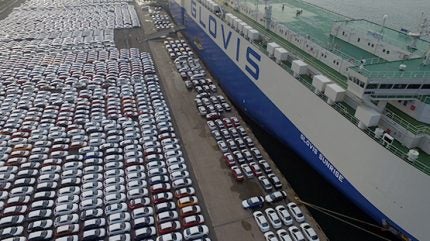
The US government has agreed to lower tariffs on many South Korean imports, including vehicles, to 15%, following protracted negotiations between representatives of their respective governments in the final week of July.
The deal, similar to the one negotiated with Japan, puts an end to months of uncertainty for the South Korean auto industry, after US president Donald Trump hiked duties on all new vehicles entering the country to 25% in April, ahead of bilateral negotiations with its key trading partners.

Discover B2B Marketing That Performs
Combine business intelligence and editorial excellence to reach engaged professionals across 36 leading media platforms.
Not all product categories are included in the deal, with South Korean President Kim Yong-beom pointing out that “forthcoming (US) tariffs on semiconductors and pharmaceuticals will be treated on equal footing with other countries.” Steel, aluminium and copper are also not included in the deal.
Navigate the shifting tariff landscape with real-time data and market-leading analysis. Request a free demo of GlobalData’s Strategic Intelligence here.
The two sides rushed to get the deal done ahead of the August 1st deadline set by US President Donald Trump, with Hyundai Motor Group’s (HMG) chairman Chung Euisun flying in to Washington to support the South Korean government in its negotiations.
HMG had already committed, earlier this year, to invest US$ 21 billion in the US by 2028 – including in a new steel mill to be built in Louisiana by Hyundai Steel and the expansion of HMG’s new vehicle production plant in Georgia. The conglomerate has already invested more than US$ 20 billion since it entered the US market in 1986.
The US-South Korea trade deal includes a pledge by South Korean companies to invest US$ 350 billion in the US, in key sectors such as shipbuilding, energy, automotive, steel and other sectors. It also includes a commitment by the South Korean government to purchase US$ 100 billion in liquid natural gas (LNG) and other energy products from the US.
Navigate the shifting tariff landscape with real-time data and market-leading analysis. Request a free demo of GlobalData’s Strategic Intelligence here.






